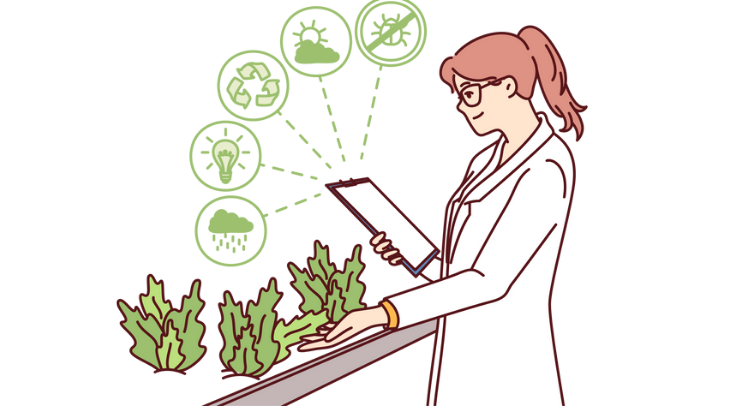Hydroponics is an innovative way of growing plants without soil, offering amazing benefits including faster growth, higher yields, and more efficient use of resources. However, despite these benefits, hydroponic systems can encounter problems that can affect the health and productivity of your plants. Here is a guide to common hydroponic problems and solutions to keep your system running smoothly.
1. Nutrient Imbalance Problem:
Plants show yellowing leaves, stunted growth, or other deficiency symptoms.
Solutions:
- pH Monitor: Maintain a pH range of 5.5 to 6.5 for optimal nutrient absorption.
- Use Quality Nutrients: Ensure a balanced mix of macro- and micronutrients.
- Flush System: Flush the system regularly to remove salt deposits.
- Routine Testing: Check the Electrical Conductivity (EC) of the nutrient solution to ensure it is the correct concentration.
2. Algae Growth Problem:
A green slime forms on the surface or within the nutrient container, reducing oxygen levels and increasing the likelihood of pest infestation.
Solutions:
- Block Light: Keep containers and tubing covered to prevent light from entering the nutrient solution.
- Clean Regularly: Clean system components regularly with a mild disinfectant.
- Add Beneficial Microorganisms: Introduce a microbial solution that inhibits algae growth.
3. Root Rot The Problem:
Brown, mushy roots with an unpleasant odor indicate a lack of oxygen and harmful pathogens.
Solutions:
- Improve Aeration: Use an air stone or enrich the water with oxygen.
- Maintain Water Temperature: Keep the nutrient solution between 18-22°C (64-72°F).
- Use Beneficial Bacteria: Add a microbial inoculant to fight pathogens.
- Disinfect: Disinfect the system if an infection occurs.
4. Pests in the System Problem:
Insects such as spider mites, aphids and fungus gnats invade your hydroponic system.
Solutions:
- Check Regularly: Check plants and roots frequently for pests.
- Use Natural Remedies: Apply neem oil or insecticidal soap.
- Biological Pest Control: Use predatory insects such as ladybugs.
- Ensure Cleanliness: Keep growing area free of dirt and organic material.
5. Clogged Drip Nozzle or Pump Problem:
Restricted water flow causes uneven distribution of nutrients.
Solutions:
- Filter Water: Use a pre-filter to prevent debris from getting into the system.
- Flush Regularly: Clean nozzles and pumps to unclog them.
- Check your nutrient solution: Make sure the nutrients are not too concentrated as this can lead to the formation of sediment.
6. Plants are wilting or dying Problem:
Despite regular care, your plant looks limp, weak or dying. Solution:
- Check your watering schedule: Make sure your plant isn’t watered too much or too little.
- Check for pathogens: Watch for signs of disease and treat with the appropriate solution.
- Assess lighting conditions: Ensure your plant receives the correct light intensity and duration.
- Maintain a constant temperature: Avoid extreme temperature fluctuations.
7. pH Fluctuations Problem:
pH is unstable, causing nutrient lockout.
Solutions:
- Use buffers: Stabilize pH levels with products such as potassium silicate or phosphate.
- Check water quality: Use distilled or reverse osmosis (RO) water to remove contaminants.
- Regular Monitoring: Test pH daily with a reliable pH meter.
8. Water Temperature Issues Problem:
The nutrient solution gets too hot, reducing oxygen levels and promoting root disease.
Solution:
- Use a Water Chiller: Use a water chiller to keep water temperature optimal.
- Insulate Containers: Use reflective material to minimize heat absorption. Avoid direct sunlight. Place containers in a shady or cool location.
Final Tips for a Healthy Hydroponic System
- Routine Maintenance: Clean and inspect all components of your system regularly.
- Quality Control: Use high quality water and nutrients.
- Monitor Environment: Keep an eye on temperature, humidity and light.
- Continuing Education: Stay up to date on hydroponic best practices and new technologies.
By quickly identifying and correcting these common problems, you can ensure your hydroponic system thrives and enjoy bountiful harvests all year round.

